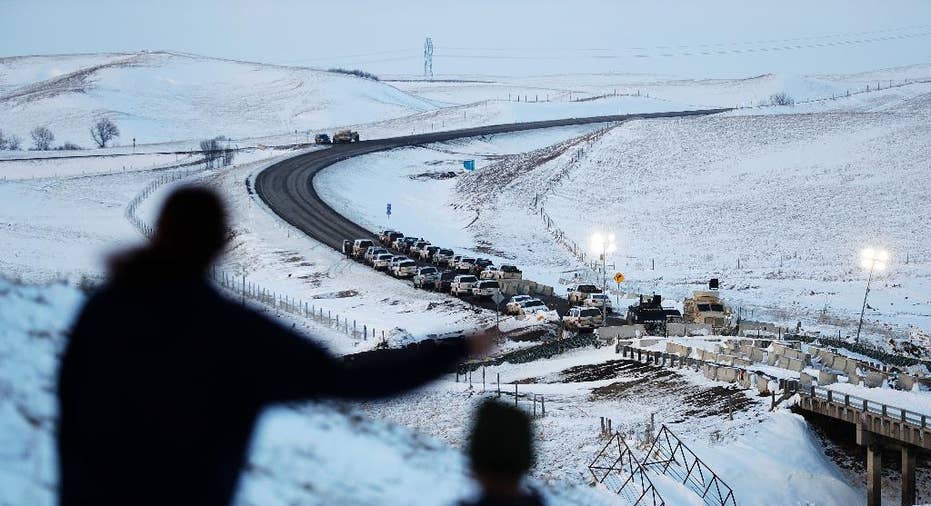A timeline of the Dakota Access oil pipeline

Notable events in the dispute over the four-state, $3.8 billion Dakota Access oil pipeline.
___
December 2014 — Dallas-based Energy Transfer Partners applies to the federal government to build the 1,200-mile Dakota Access pipeline to carry North Dakota oil through South Dakota and Iowa to an existing pipeline in Illinois. The pipeline is projected to carry half a million barrels of oil daily. The proposed route skirts the Standing Rock Sioux tribe's reservation and crosses under Lake Oahe, a Missouri River reservoir in North Dakota that serves as the tribe's drinking water source.
March 2016 — Iowa regulators approve the pipeline, making it the fourth and final state to grant permission.
April 2016 — Opponents establish a camp at the confluence of the Cannonball and Missouri rivers in southern North Dakota for peaceful protest. Camps in the area would later swell to thousands of people.
July 2016 — The U.S. Army Corps of Engineers grants pipeline permits at more than 200 water crossings. The Standing Rock Sioux sues a day later. The Cheyenne River Sioux later join the lawsuit as plaintiffs.
Aug. 10 — North Dakota authorities make the first arrests of protesters. The total has since surpassed 600, including actress Shailene Woodley and Green Party presidential candidate Jill Stein.
Sept. 9 — U.S. District Court Judge James Boasberg denies an attempt by the Standing Rock Sioux to halt pipeline construction. The same day, the Army, the Department of Justice and the Interior Department declare that construction bordering or under Lake Oahe won't go forward pending further review.
Nov. 20, 21 — Authorities use tear gas, rubber bullets and water sprays on protesters who they say assaulted officers with rocks and burning logs at a blockaded bridge, in one of the most violent clashes of the protest. At least 17 protesters are taken to hospitals. One officer was injured when struck in the head with a rock.
Dec. 4 — Assistant Army Secretary for Civil Works Jo-Ellen Darcy declines to allow the pipeline to be built under Lake Oahe in part because she says alternate routes need to be considered. Energy Transfer Partners calls the decision politically motivated and accuses President Barack Obama's administration of delaying the matter until he leaves office.
Jan. 18, 2017 — The Army Corps launches a full environmental study of the pipeline's disputed Lake Oahe crossing, a study that could take up to two years. Boasberg, the federal judge, rejects an ETP request to stop the study.
Jan. 24 — President Donald Trump signs executive actions to advance the construction of the Dakota Access oil pipeline, along with the Keystone XL oil pipeline.
Jan. 31 — Sen. John Hoeven of North Dakota says the Acting Secretary of the Army has directed the Army Corps of Engineers to proceed with an easement necessary to complete the pipeline and a Hoeven spokesman says the move means "they plan to approve it" within days.



















